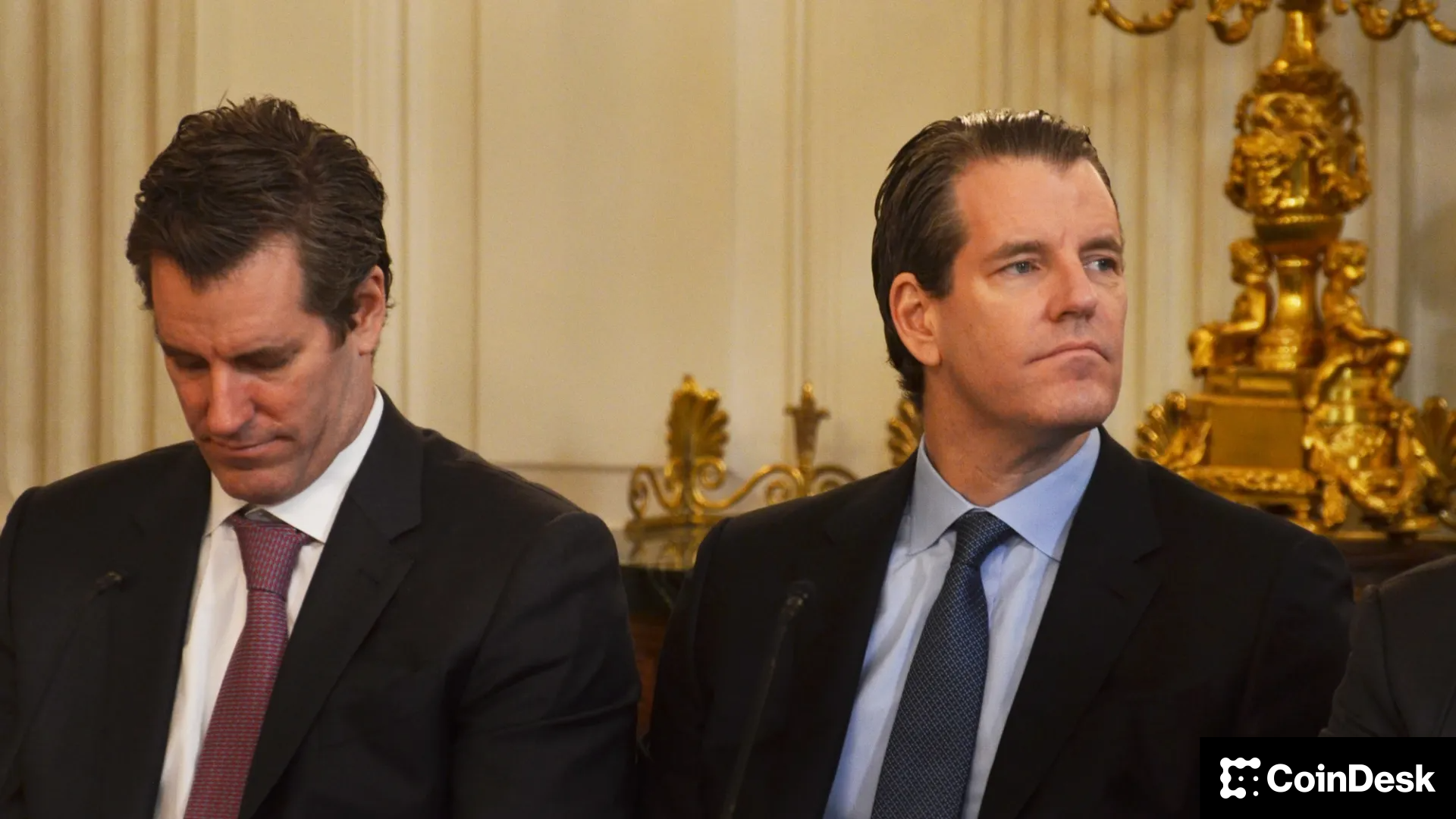Uncategorized
VARA Is Focused on Consumer Protection for Tokenization Efforts in Dubai, Senior Official Says

Crypto regulation has come a long way. No longer is it a pass-off game between various government bodies: Digital assets now have dedicated overseers in a lot of regions.
One of the pioneers in the space is Dubai’s crypto regulator, the Virtual Assets Regulatory Authority (VARA). What sets VARA apart is its ability to effectively communicate guidelines and regulation to crypto firms, according to its senior official.
«Set and forget does not work for crypto, it’s all about feedback and open channels,» said Sean McHugh, senior director of market assurance at VARA. «Since we are exclusively focused on crypto, it allows us to get a little deeper into the tech and our rules are written for the modern-era.»
Dubai has become a crypto darling, emerging as one of the preferred choice for non-native crypto firms to set up shop and gain access to the region and beyond.
«Dubai is seen as a great jumping off point. We’ve seen a lot of [crypto] firms from Europe and beyond coming here and the reverse is also true, we see a lot of companies from other side of Asia come here. It’s a strategic move and the regulatory clarity helps them,» McHugh added.
Tokenization and beyond
Real world tokenization, or RWA, is gaining lot of traction in Dubai and for good reason. The region’s real estate agency, the Dubai Land Department (DLD), recently started a pilot to register and transfer property deeds on the blockchain. The tokenization initiative is being fostered by VARA and the Dubai Future Foundation (DFF).
The integration of real-estate into blockchain could bolster the city’s massive property market. DLD expects tokenized real-estate to jump to 60 billion dirhams ($16 billion) by 2033, accounting for 7% of Dubai’s total property transactions.
McHugh, speaking to CoinDesk at VARA’s office, believes that real estate is just the beginning.
«It’s very popular, not just in Dubai, but beyond. Dubai has the ability to get things done quicker,» he said, adding that they are also seeing a lot of precious metal tokenization projects.
VARA, with its nimble approach to regulation, is closely watching the space, he said.
«Whether it’s real estate, precious metal, or some other asset, a big part of my focus on this is customer protection. So, especially when you get to fractionalization it brings in a lot of new capital and retail investors, that need to be protected,» he said.
«We ask a lot of questions when it comes to RWA projects, what is the token? what exactly do I own? What does it trade and who is the liquidity provider? Cause for investors (institutional or otherwise) they need a liquidity event to get out. And these are the type of things we drill down with each project,» McHugh emphasized.
Interagency collaboration
The Donald Trump administration has openly advocated for crypto in the U.S. and in the opinion of industry leaders pushed other regions to follow suit. That’s not necessarily the case in the UAE, especially with VARA, which was created three years ago, long before the U.S. President became an open proponent of digital assets.
McHugh believes that interagency cooperation will be key for global crypto regulation, but does not see any particular agency leading the charge.
«I don’t think we’d see some super regulator, regional or otherwise. I think each agency is focused on its own customers,» he said, adding that memoranda of understanding (MoU) and open communication between governing bodies is the way to successfully watch over crypto.
Whether it’s exchanges, Web3 or RWA, the future of crypto in Dubai looks bright and McHugh, who was the former chief compliance officer at Citadel, said he feels that one of the main reason for that is the pro-business and start-up nature of the city.
Business
Crypto Trading Firm Keyrock Buys Luxembourg’s Turing Capital in Asset Management Push

Crypto trading firm Keyrock said it’s expanding into asset and wealth management by acquiring Turing Capital, a Luxembourg-registered alternative investment fund manager.
The deal, announced on Tuesday, marks the launch of Keyrock’s Asset and Wealth Management division, a new business unit dedicated to institutional clients and private investors.
Keyrock, founded in Brussels, Belgium and best known for its work in market making, options and OTC trading, said it will fold Turing Capital’s investment strategies and Luxembourg fund management structure into its wider platform. The division will be led by Turing Capital co-founder Jorge Schnura, who joins Keyrock’s executive committee as president of the unit.
The company said the expansion will allow it to provide services across the full lifecycle of digital assets, from liquidity provision to long-term investment strategies. «In the near future, all assets will live onchain,» Schnura said, noting that the merger positions the group to capture opportunities as traditional financial products migrate to blockchain rails.
Keyrock has also applied for regulatory approval under the EU’s crypto framework MiCA through a filing with Liechtenstein’s financial regulator. If approved, the firm plans to offer portfolio management and advisory services, aiming to compete directly with traditional asset managers as well as crypto-native players.
«Today’s launch sets the stage for our longer-term ambition: bringing asset management on-chain in a way that truly meets institutional standards,» Keyrock CSO Juan David Mendieta said in a statement.
Read more: Stablecoin Payments Projected to Top $1T Annually by 2030, Market Maker Keyrock Says
Business
Crypto Trading Firm Keyrock Buys Luxembourg’s Turing Capital in Asset Management Push

Crypto trading firm Keyrock said it’s expanding into asset and wealth management by acquiring Turing Capital, a Luxembourg-registered alternative investment fund manager.
The deal, announced on Tuesday, marks the launch of Keyrock’s Asset and Wealth Management division, a new business unit dedicated to institutional clients and private investors.
Keyrock, founded in Brussels, Belgium and best known for its work in market making, options and OTC trading, said it will fold Turing Capital’s investment strategies and Luxembourg fund management structure into its wider platform. The division will be led by Turing Capital co-founder Jorge Schnura, who joins Keyrock’s executive committee as president of the unit.
The company said the expansion will allow it to provide services across the full lifecycle of digital assets, from liquidity provision to long-term investment strategies. «In the near future, all assets will live onchain,» Schnura said, noting that the merger positions the group to capture opportunities as traditional financial products migrate to blockchain rails.
Keyrock has also applied for regulatory approval under the EU’s crypto framework MiCA through a filing with Liechtenstein’s financial regulator. If approved, the firm plans to offer portfolio management and advisory services, aiming to compete directly with traditional asset managers as well as crypto-native players.
«Today’s launch sets the stage for our longer-term ambition: bringing asset management on-chain in a way that truly meets institutional standards,» Keyrock CSO Juan David Mendieta said in a statement.
Read more: Stablecoin Payments Projected to Top $1T Annually by 2030, Market Maker Keyrock Says
Business
Gemini Shares Slide 6%, Extending Post-IPO Slump to 24%

Gemini Space Station (GEMI), the crypto exchange founded by Cameron and Tyler Winklevoss, has seen its shares tumble by more than 20% since listing on the Nasdaq last Friday.
The stock is down around 6% on Tuesday, trading at $30.42, and has dropped nearly 24% over the past week. The sharp decline follows an initial surge after the company raised $425 million in its IPO, pricing shares at $28 and valuing the firm at $3.3 billion before trading began.
On its first day, GEMI spiked to $45.89 before closing at $32 — a 14% premium to its offer price. But since hitting that high, shares have plunged more than 34%, erasing most of the early enthusiasm from public market investors.
The broader crypto equity market has remained more stable. Coinbase (COIN), the largest U.S. crypto exchange, is flat over the past week. Robinhood (HOOD), which derives part of its revenue from crypto, is down 3%. Token issuer Circle (CRCL), on the other hand, is up 13% over the same period.
Part of the pressure on Gemini’s stock may stem from its financials. The company posted a $283 million net loss in the first half of 2025, following a $159 million loss in all of 2024. Despite raising fresh capital, the numbers suggest the business is still far from turning a profit.
Compass Point analyst Ed Engel noted that GEMI is currently trading at 26 times its annualized first-half revenue. That multiple — often used to gauge whether a stock is expensive — means investors are paying 26 dollars for every dollar the company is expected to generate in sales this year. For a loss-making company in a volatile sector, that’s a steep price, and could be fueling investor skepticism.
-

 Business11 месяцев ago
Business11 месяцев ago3 Ways to make your business presentation more relatable
-

 Fashion11 месяцев ago
Fashion11 месяцев agoAccording to Dior Couture, this taboo fashion accessory is back
-

 Entertainment11 месяцев ago
Entertainment11 месяцев ago10 Artists who retired from music and made a comeback
-

 Entertainment11 месяцев ago
Entertainment11 месяцев ago\’Better Call Saul\’ has been renewed for a fourth season
-

 Entertainment11 месяцев ago
Entertainment11 месяцев agoNew Season 8 Walking Dead trailer flashes forward in time
-

 Business11 месяцев ago
Business11 месяцев ago15 Habits that could be hurting your business relationships
-

 Entertainment11 месяцев ago
Entertainment11 месяцев agoMeet Superman\’s grandfather in new trailer for Krypton
-

 Entertainment11 месяцев ago
Entertainment11 месяцев agoDisney\’s live-action Aladdin finally finds its stars




